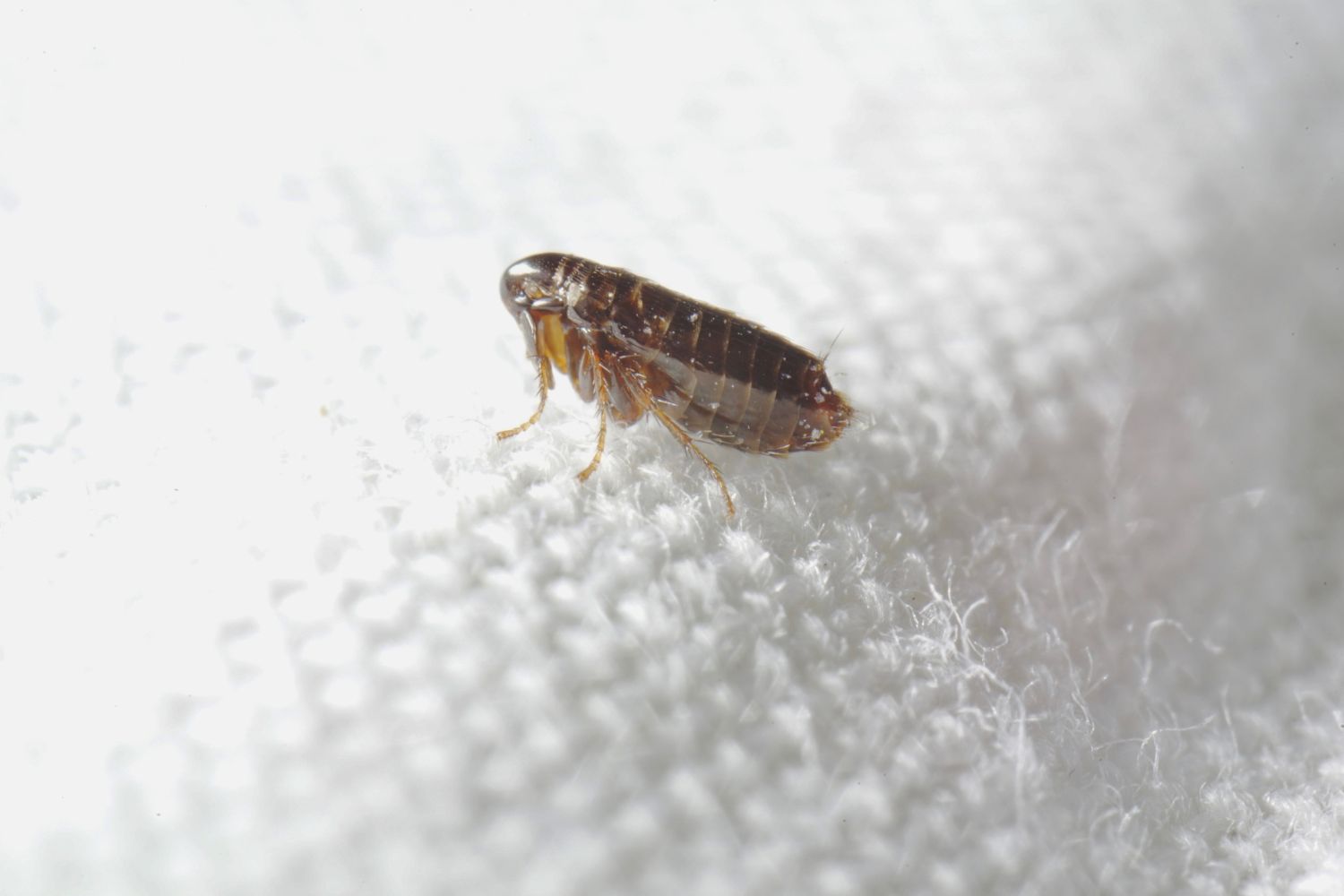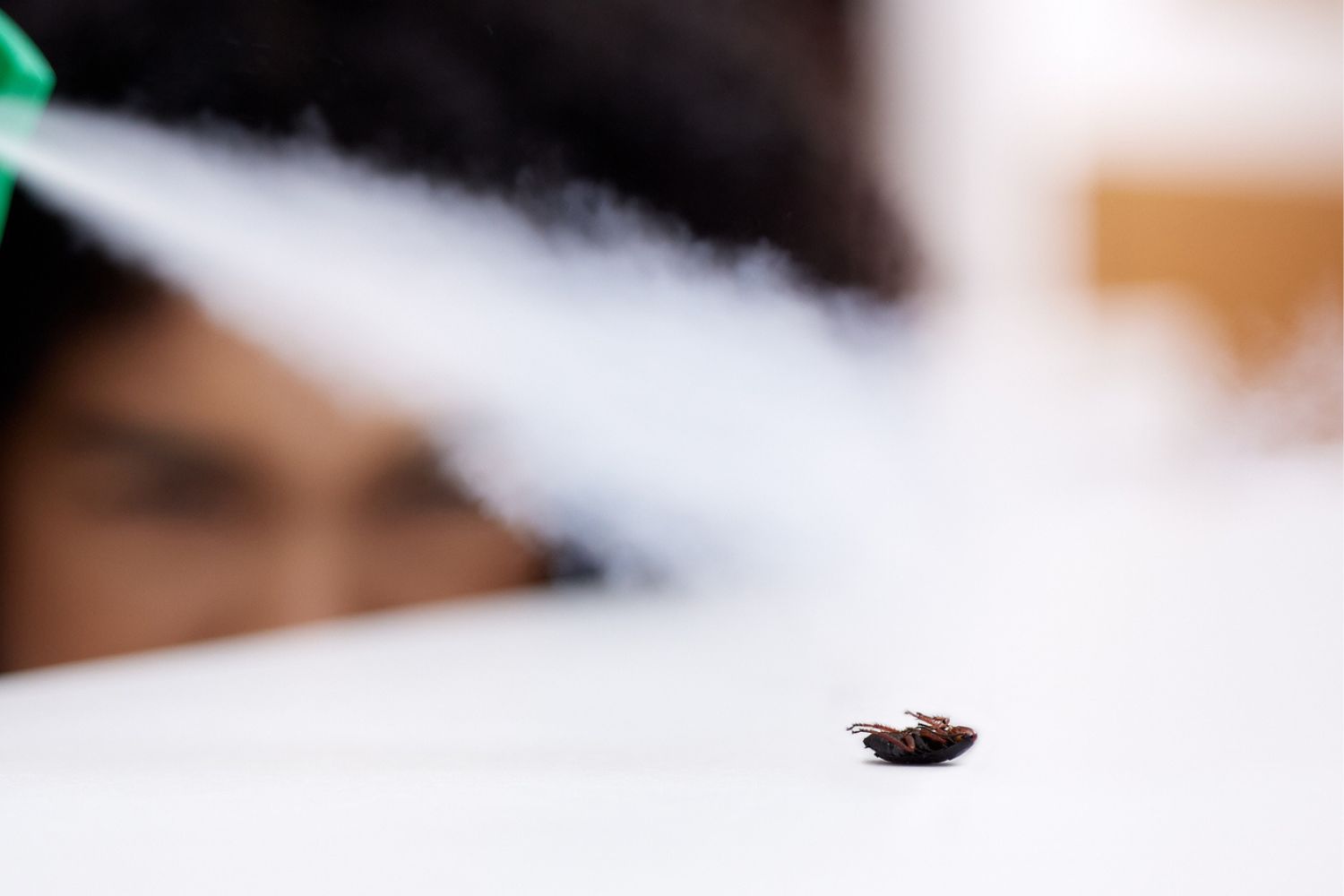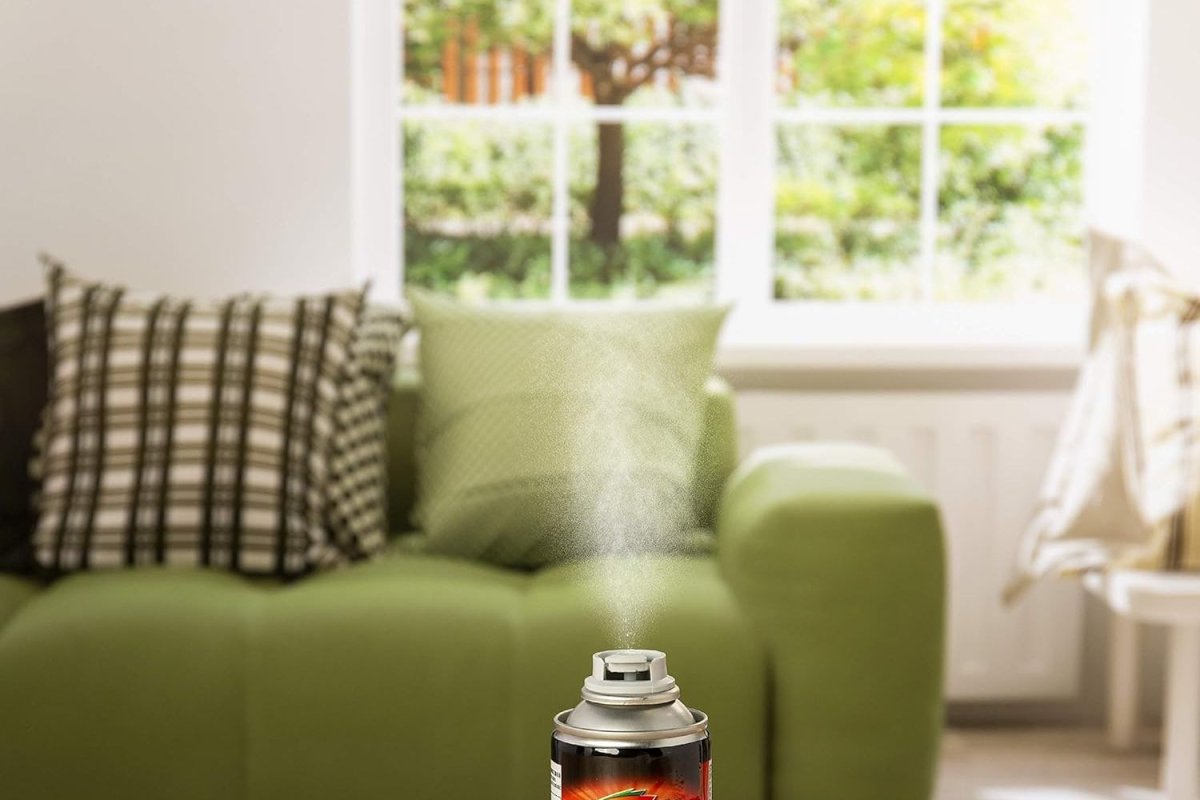We may earn revenue from the products available on this page and participate in affiliate programs. Learn More ›
What You Need To Know
- Flea bombs release a pesticide fog into a home that kills adult fleas on contact, but they’re less effective in getting rid of flea eggs and larvae.
- Safety risks associated with using flea bombs include flammability and exposure to harsh pesticides.
- Alternative DIY flea control methods include vacuuming, using diatomaceous earth, washing bedding frequently, using flea traps, and treating pets for fleas.
- The best way to get rid of a flea infestation for good is by hiring a pest control service.
Q: I’ve noticed a flea infestation in my home, and I’ve heard that a bug bomb is a fast and effective way to get rid of fleas. Do flea bombs work? If so, what’s the best approach to bomb a house for bugs?
A: Discovering a flea infestation calls for a fast and effective solution. A flea and bug fogger, commonly referred to as a flea bomb, is often touted as a convenient do-it-yourself remedy for such unwelcome invasions.
A flea bomb, also called a flea fogger, fills the room with insecticidal mist, targeting the pesky fleas that have taken up residence in carpets, furniture, and other nooks and crannies. However, it’s important to understand the risks and limitations of this pest control method. Before deploying one of the best flea foggers in a battle against fleas, you’ll want to learn how flea bombs work, how effective they are in eliminating infestations, and most importantly, all of the necessary safety considerations for using them. This will also help you determine whether flea bombing is the best course of action, or whether you’d prefer to enlist the help of one of the best pest control companies (such as Orkin or Terminix).
What are flea bombs, and how effective are they?
A flea bomb or fogger is an aerosol device that releases a pesticide mist into the air. These products are often marketed as a quick solution to flea infestations, claiming to blanket an area with insecticides that kill fleas on contact. Other insect foggers, such as roach bombs and bug bombs for spiders, work similarly for other types of insect infestations. Despite their widespread availability and ease of use, however, the safety and effectiveness of bug bombs is debatable. Notably, chemicals from bug bombs may not reach areas underneath furniture or penetrate carpeting, meaning a large part of the flea population is not affected. For this reason, it may be more effective to spray for fleas rather than bomb to achieve better coverage. In addition, flea bombs have been shown to be largely ineffective against flea eggs and larvae.
It’s reasonable to wonder “Are flea bombs safe for pets?” since animals are typically the primary carriers and hosts of fleas within a home. Unfortunately, these products are not safe for use directly on or around pets, which significantly undermines their effectiveness. Treating the environment alone does not address the likely source of the infestation. Since pets can reinfest a home, flea bombs might not be the silver bullet many residents are hoping for.

What to Know Before Using Flea Bombs
Before purchasing and using a flea fogger for the house, it’s essential to make note of some important safety precautions.
Flea bombs are highly flammable and must be stored and used away from ignition sources.
Insect bombing introduces not only a chemical hazard but also a significant fire risk due to the highly flammable nature of these products. According to the Environmental Protection Agency (EPA), the aerosol propellants used in flea foggers can catch fire if exposed to open flames, sparks, or any other ignition source. Users must ensure flea bombs are kept at least 6 feet away from potential ignition sources, such as pilot lights, electrical sparks, or open flames, and that the house is vacated of all humans and pets during application.
To minimize pesticide exposure, it’s important to use only the size and number of flea bombs recommended for the square footage of the space.
Overusing a fogger for bugs can lead to dangerously high levels of pesticides within a home. This not only poses acute health risks to residents upon re-entry but can also contribute to long-term exposure concerns. Most flea bombs are labeled with the area size that the product is intended to treat. To ensure the pesticide reaches the infestation without saturating the home with harmful chemicals, it’s essential to calculate the exact square footage of the space and apply only the recommended number of flea bombs. According to the California Department of Pesticide Regulation, it is unsafe to use foggers in enclosed closets or rooms that are smaller than 5 feet by 5 feet.
Residents will also need to vacate the home for 2 to 4 hours after the flea bomb is activated.
When residents bomb a house for insects, the EPA recommends all occupants evacuate the home for 2 to 4 hours once the bomb is activated. If the evacuation time span provided on the flea bomb packaging is longer than 4 hours, it’s important to follow the instructions on the product label. The evacuation period allows the pesticide mist to settle and ensures that the toxic chemicals have adequately dispersed before occupants return home. Staying out of the home in the hours following a flea fogger release minimizes the risk of inhaling harmful substances, which can pose significant health risks, especially to those with respiratory issues or sensitivities to chemicals.
Chemicals from flea bombs can linger on surfaces indefinitely—areas that have been exposed will need to be thoroughly cleaned.
After deploying a flea bomb, residents will need to thoroughly clean their homes to ensure the space is safe to live in. First, opening doors and windows will help air out the space and reduce the risk of inhaling chemicals. It’s important to wash all bedding before anyone goes to sleep, as the pesticide residue can pose health risks through skin contact or inhalation. It’s also a good idea to wash any fabrics in the home that can safely be laundered, including clothing and curtains, to remove lingering chemicals.
Vacuuming after a flea bomb has been deployed is also highly recommended, as it helps to remove any dead fleas, eggs, and pesticide residue from floors, carpets, and upholstery. This deep cleaning not only minimizes residents’ exposure to harmful chemicals but also removes any remnants of the infestation.

Other DIY flea control methods are safer than flea bombs but may also have limited effectiveness.
Since flea bomb usage carries a high risk of pesticide exposure for a home’s residents, many prefer to take a nontoxic approach to getting rid of fleas in the house. These methods aim to reduce the use of chemical treatments for a more environmentally and pet-friendly approach.
There are several DIY alternatives for those who don’t want to bomb for insects:
- Regular vacuuming. This can help remove fleas, eggs, and larvae from carpets and upholstery.
- Washing bedding. Running sheets, blankets, comforters, and pet bedding in very hot water can help kill fleas.
- Diatomaceous earth. This nontoxic powder can be sprinkled on carpets and pet areas to dehydrate and kill fleas.
- Flea traps. These products use heat and light to attract and trap fleas, which can be an effective way to monitor and reduce flea populations.
Fleas are drawn to the same thing that attracts bed bugs—a reliable source of blood to feed on. In most cases, their target is the family cat or dog. For those who suspect their pet may have been the source of the flea infestation, bathing the pet, using a flea comb or one of the best flea sprays that are pet-safe, and seeking flea treatment from their veterinarian can prevent reinfestation once the initial batch of fleas has been killed.
While these methods are safer for both humans and pets, their effectiveness can vary. They may require consistent and combined efforts over time to address the infestation fully.
The best way to deal with a flea infestation is to get help from an exterminator.
It can be tempting to tackle an infestation with DIY methods to save on pest control costs. However, when residents are facing a flea infestation, enlisting the help of a professional exterminator is often the most effective course of action. Exterminators have expertise, experience, and access to more potent and targeted treatments than those available for DIY use. When it comes to DIY methods like flea bombing, it can take as many as three or four treatments to eradicate an infestation, and it is difficult to tell when the problem is gone for good. Each time a flea bomb is deployed, residents risk exposing themselves to harmful chemicals. By contrast, pest control technicians know how to safely treat a home for fleas with the least possible risk to residents and their pets. They may even offer free re-treatment if fleas return.
As part of the cost of flea extermination services, these professionals will not only assess the extent of the flea population but also pinpoint the source of the infestation and any potential entry points in the home. With this information, exterminators can combine immediate eradication measures like home fumigation (fumigation costs around $4,750 on average) with long-term prevention strategies to ensure the flea problem is resolved efficiently and effectively. A pest control company can also offer advice on maintaining a flea-free environment for better health and peace of mind for everyone in the household.


